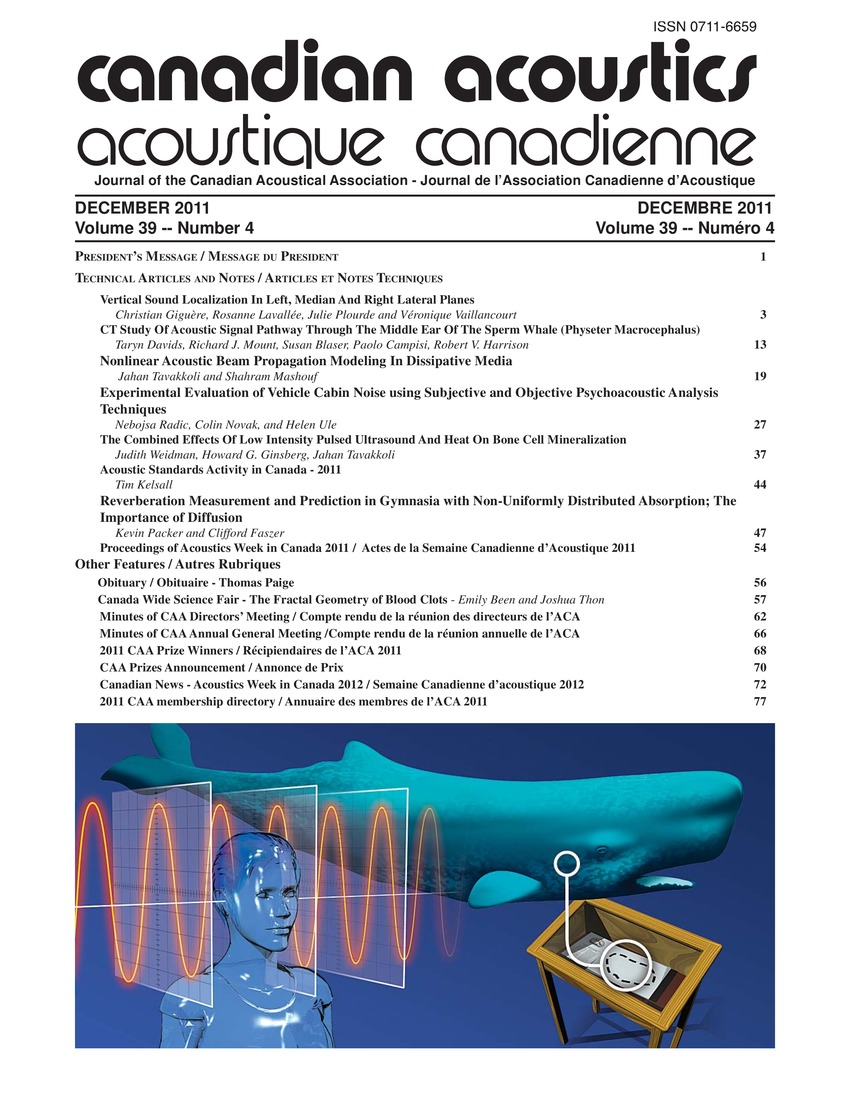Nonlinear acoustic beam propagation modeling in dissipative media
Mots-clés :
Diffraction, Geometry, Numerical methods, Tissue, Ultrasonic testing, Ultrasonics, 3D numerical model, 3D solutions, Axisymmetric, Biomedical ultrasound, Computational tools, Continuous wave ultrasound, Definition method, Dissipative media, Experimental data, High intensity focused ultrasound, Non-invasive, Non-linear acoustics, Non-linear numerical model, Non-linear ultrasound, Non-Linearity, Nonlinear propagation, Nonlinear propagation effect, Second-order operators, Soft tissue, Source geometry, Treatment modality, Ultrasound beamsRésumé
La simulation précise d'un faisceau d'ultrasons intensive nécessite de prendre des effets de propagation non-linéaire en compte. Un exemple notable dans le domaine d'ultrasons biomédicale où l'effet de la non-linéarité peut jouer un rôle important est des ultrasons focalisés de haute intensité (HIFU) comme un modalité de traitement fondées sur l'énergie non-invasive. Dans ce travail, un modèle numérique 3D pour simuler la propagation non-linéaire des ultrasons à ondes continues dans un milieu dissipatif et homogène similaire au tissue est présenté. Le modèle met en œuvre une méthode de deuxième ordre d'opérateur dans lequel les effets de diffraction, la non-linéarité et de l'atténuation sont propagées de façon additive. Le modèle utilise une méthode arbitraire de définition de source géométrie 3D et un régime de propagation non-axisymétriques, ce qui conduit à une solution 3D au domaine d'ultrasons non-linéaire qui en résulte. Ce travail s'appuie sur des méthodes développées par Tavakkoli et al. (1998) et Zemp et al. (2003) qui offre un moyen efficace de calculer le champ non-linéaire des ondes ultrasons continue. Le modèle proposé est un outil particulièrement utile dans l'exercice des simulations numérique des faisceaux ultrasonores focalisés de haute intensité dans les tissus où les effets de la non-linéarité, de diffraction et d'atténuation sont importantes. Le modèle a été validé par des comparaisons avec d'autres établis linéaires et non-linéaires des modèles numériques ainsi que les données expérimentales publiées.Fichiers supplémentaires
Publié-e
Comment citer
Numéro
Rubrique
Licence
Author Licensing Addendum
This Licensing Addendum ("Addendum") is entered into between the undersigned Author(s) and Canadian Acoustics journal published by the Canadian Acoustical Association (hereinafter referred to as the "Publisher"). The Author(s) and the Publisher agree as follows:
-
Retained Rights: The Author(s) retain(s) the following rights:
- The right to reproduce, distribute, and publicly display the Work on the Author's personal website or the website of the Author's institution.
- The right to use the Work in the Author's teaching activities and presentations.
- The right to include the Work in a compilation for the Author's personal use, not for sale.
-
Grant of License: The Author(s) grant(s) to the Publisher a worldwide exclusive license to publish, reproduce, distribute, and display the Work in Canadian Acoustics and any other formats and media deemed appropriate by the Publisher.
-
Attribution: The Publisher agrees to include proper attribution to the Author(s) in all publications and reproductions of the Work.
-
No Conflict: This Addendum is intended to be in harmony with, and not in conflict with, the terms and conditions of the original agreement entered into between the Author(s) and the Publisher.
-
Copyright Clause: Copyright on articles is held by the Author(s). The corresponding Author has the right to grant on behalf of all Authors and does grant on behalf of all Authors, a worldwide exclusive license to the Publisher and its licensees in perpetuity, in all forms, formats, and media (whether known now or created in the future), including but not limited to the rights to publish, reproduce, distribute, display, store, translate, create adaptations, reprints, include within collections, and create summaries, extracts, and/or abstracts of the Contribution.


